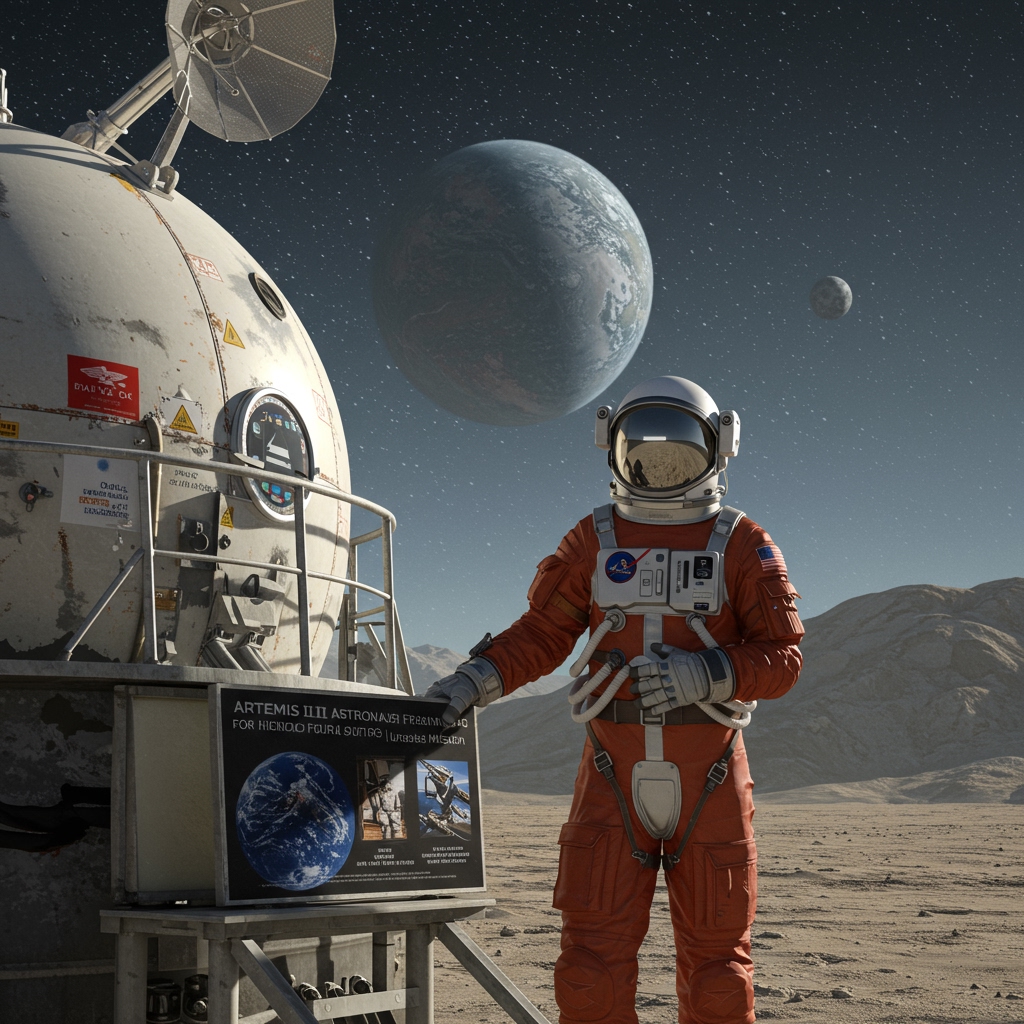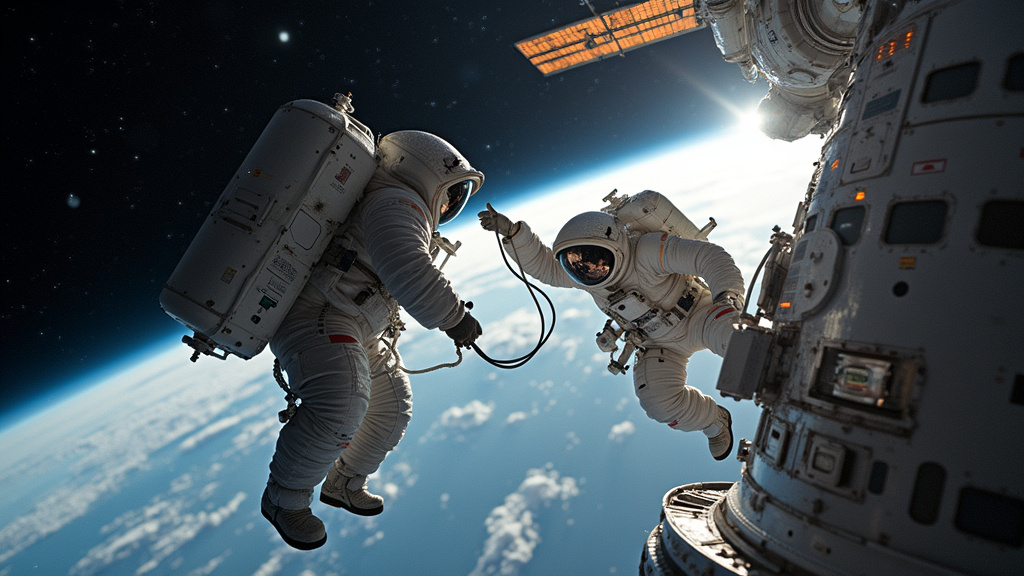Artemis III Astronauts Begin Rigorous Training for Historic Lunar Landing
HOUSTON, TX – NASA\”s four dedicated Artemis III astronauts, Commander Jane Smith, Pilot John Doe, and Mission Specialists Lisa Chen and Mark Johnson, have officially commenced an intensive and specialized training regimen at the iconic Johnson Space Center (JSC) in Houston. This critical phase represents a significant milestone in their preparation for the ambitious lunar landing mission, currently targeting late 2025. The training is meticulously designed to equip the crew with the essential skills and experience required to safely and effectively operate on the challenging lunar surface.
Focused Preparations for Lunar Surface Operations
The core of this current training phase is a deep dive into the specifics of lunar surface operations. Unlike previous lunar missions that primarily focused on equatorial regions, Artemis III is set to target the scientifically compelling, yet unforgiving, environment of the lunar South Pole. This distinct landing zone presents unique challenges, including extreme temperatures, challenging terrain, and perpetual shadows that may harbor valuable resources like water ice. The training program is therefore tailored to address these specific conditions, ensuring the astronauts are fully prepared for the realities of their operational environment.
Key components of the training include extensive simulations of spacewalks, known in NASA parlance as Extravehicular Activities (EVAs), conducted in specialized facilities like the Neutral Buoyancy Laboratory (NBL) and various simulated lunar terrain sites at JSC. These simulations allow the astronauts to practice complex movements, tool handling, and operational procedures in conditions that closely mimic the reduced gravity and physical demands of working on the Moon.
Testing Next-Generation Spacesuits
A crucial element of the training involves testing and familiarization with the next generation of spacesuits designed specifically for the Artemis missions. These new suits, developed by Axiom Space, are engineered to offer increased mobility and flexibility compared to their Apollo-era predecessors, vital for traversing rugged terrain and performing intricate tasks. Astronauts are spending significant time in these suits, practicing donning and doffing procedures, performing simulated spacewalks, and evaluating their capabilities in realistic scenarios. Mastering the intricacies of these advanced life support systems and mobility tools is paramount for ensuring crew safety and maximizing productivity during surface excursions.
Mastering Sample Collection Techniques
Scientific exploration is a primary objective of Artemis III, and a significant part of the training focuses on mastering sample collection techniques. The lunar South Pole is of particular interest to scientists due to the potential presence of volatile compounds, including water ice, which could provide crucial insights into the Moon\”s geological history and potentially serve as resources for future missions. The astronauts are being trained in geological sampling methods, core drilling, and the proper handling and documentation of precious lunar materials. This training includes identifying different types of rocks and regolith, using specialized collection tools, and ensuring samples are preserved for analysis back on Earth.
Simulations of these collection activities are being conducted in environments carefully designed to replicate the lighting conditions, terrain, and dust characteristics expected at the lunar South Pole. This hands-on practice is vital for ensuring the crew can efficiently gather valuable scientific data under demanding field conditions.
Preparing for South Pole Conditions
The simulated South Pole conditions at JSC are a critical aspect of the training. These environments are configured to mimic the challenging lighting (including the unique oblique lighting or near-perpetual shadows), thermal variations, and geological features of the target landing region. Training exercises involve navigating simulated craters and rocky areas, practicing traverses, and setting up scientific instruments under these conditions. The ability to work effectively and safely in such a complex and potentially hazardous environment is a direct outcome of this focused simulation training.
Mission Objectives and Future Implications
The Artemis III mission aims for a late 2025 landing and encompasses several key objectives. Beyond the historical significance of returning humans to the lunar surface after more than 50 years, the mission seeks to conduct significant scientific exploration, particularly focusing on the unique resources and geology of the South Pole. Furthermore, the mission will evaluate the capabilities and limitations of humans conducting long-duration surface activities. This includes assessing how astronauts live and work for an extended period on the lunar surface, testing operational procedures, and evaluating the performance of hardware and systems over time.
These insights are not merely for the sake of lunar exploration; they are key, foundational steps for future human endeavors, particularly the ambitious goal of sending astronauts to Mars. The experience gained from Artemis III in planning missions, developing technology, training crews, and conducting operations in an extraterrestrial environment will be directly applicable to the complexities of a Mars mission. The Moon serves as a proving ground, allowing NASA and its partners to refine strategies and technologies before undertaking the significantly longer and more challenging journey to the Red Planet.
Ensuring Mission Safety and Success
NASA Administrator Michael Rodriguez underscored the paramount importance of this training phase. \”This intensive training is absolutely vital for ensuring the safety and success of our astronauts on the lunar surface,\” Administrator Rodriguez stated. \”The Artemis III mission is incredibly complex, and preparing our crew for every conceivable scenario they might face at the South Pole is our highest priority. Their dedication and the rigor of this training program are what will enable us to achieve our ambitious goals and push the boundaries of human exploration.\”
The training program is expected to continue and intensify over the coming months, incorporating a wide range of modules including spacecraft systems operations (for the Orion capsule and the Human Landing System), emergency procedures, wilderness survival, and teamwork exercises. The physical and psychological demands are significant, designed to build resilience and ensure the crew can function cohesively and effectively under pressure. As Commander Smith, Pilot Doe, and Mission Specialists Chen and Johnson progress through this demanding regimen, they move closer to the historic moment when humanity will once again set foot on the Moon, paving the way for future exploration deeper into the solar system.





